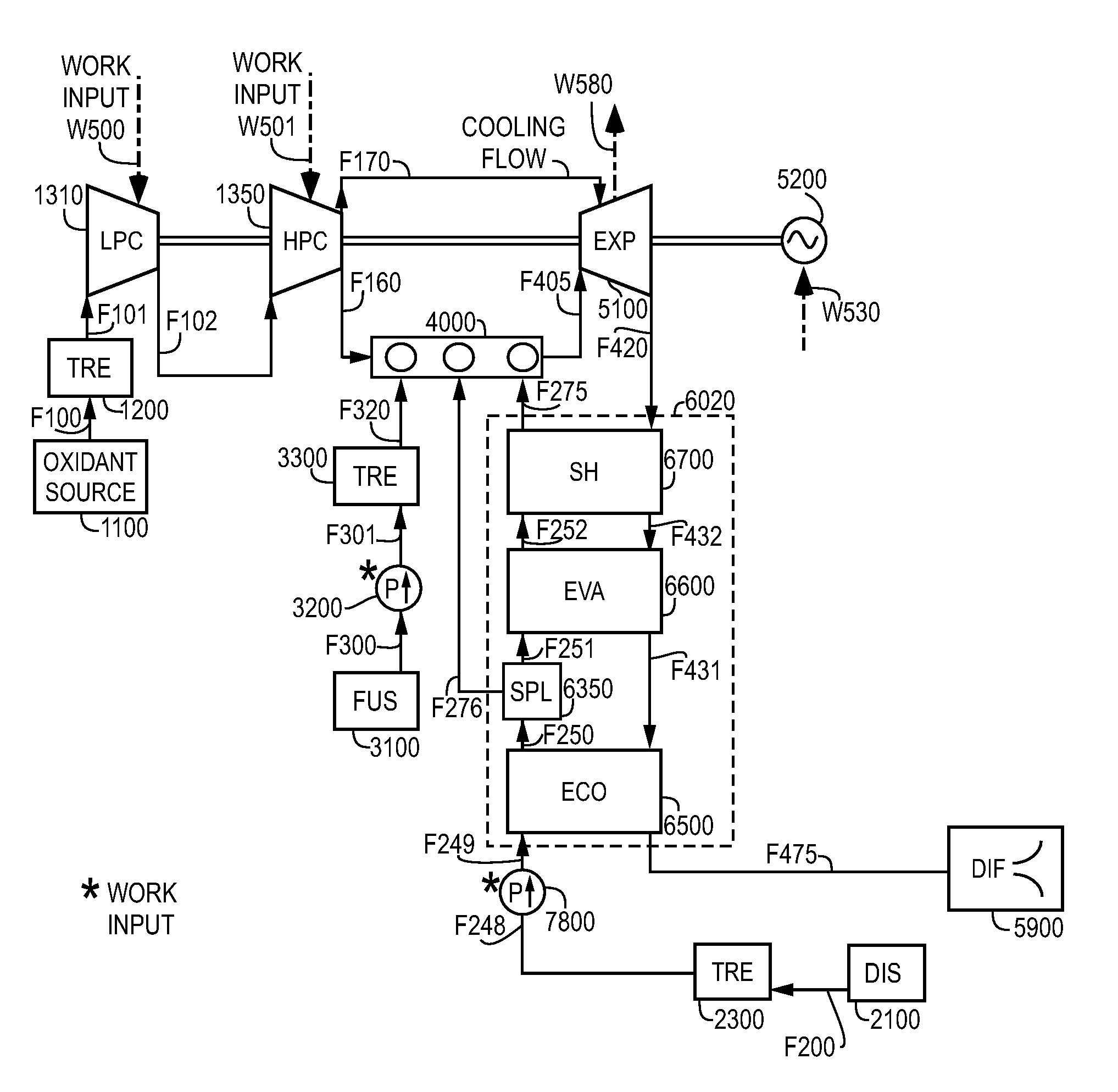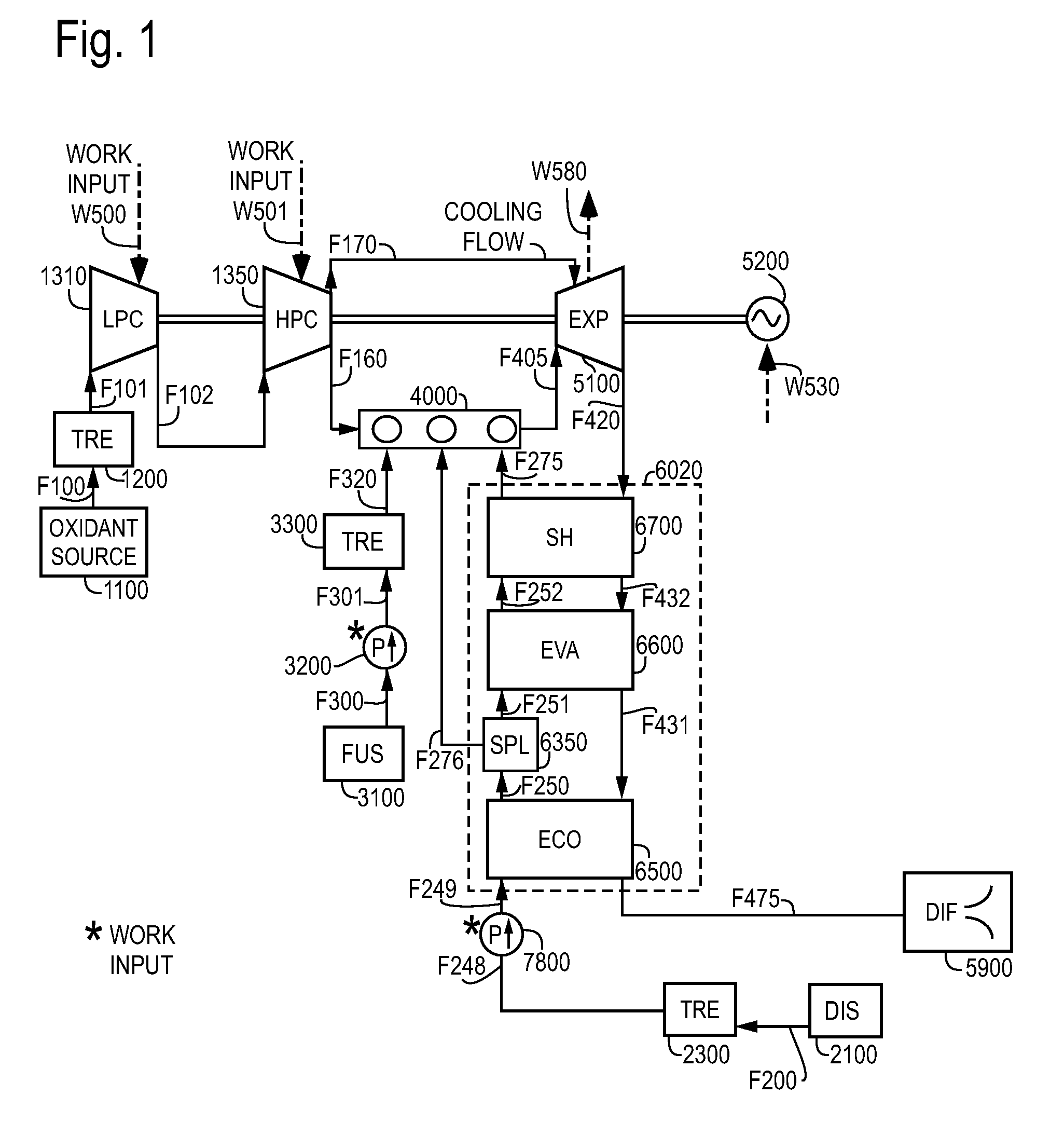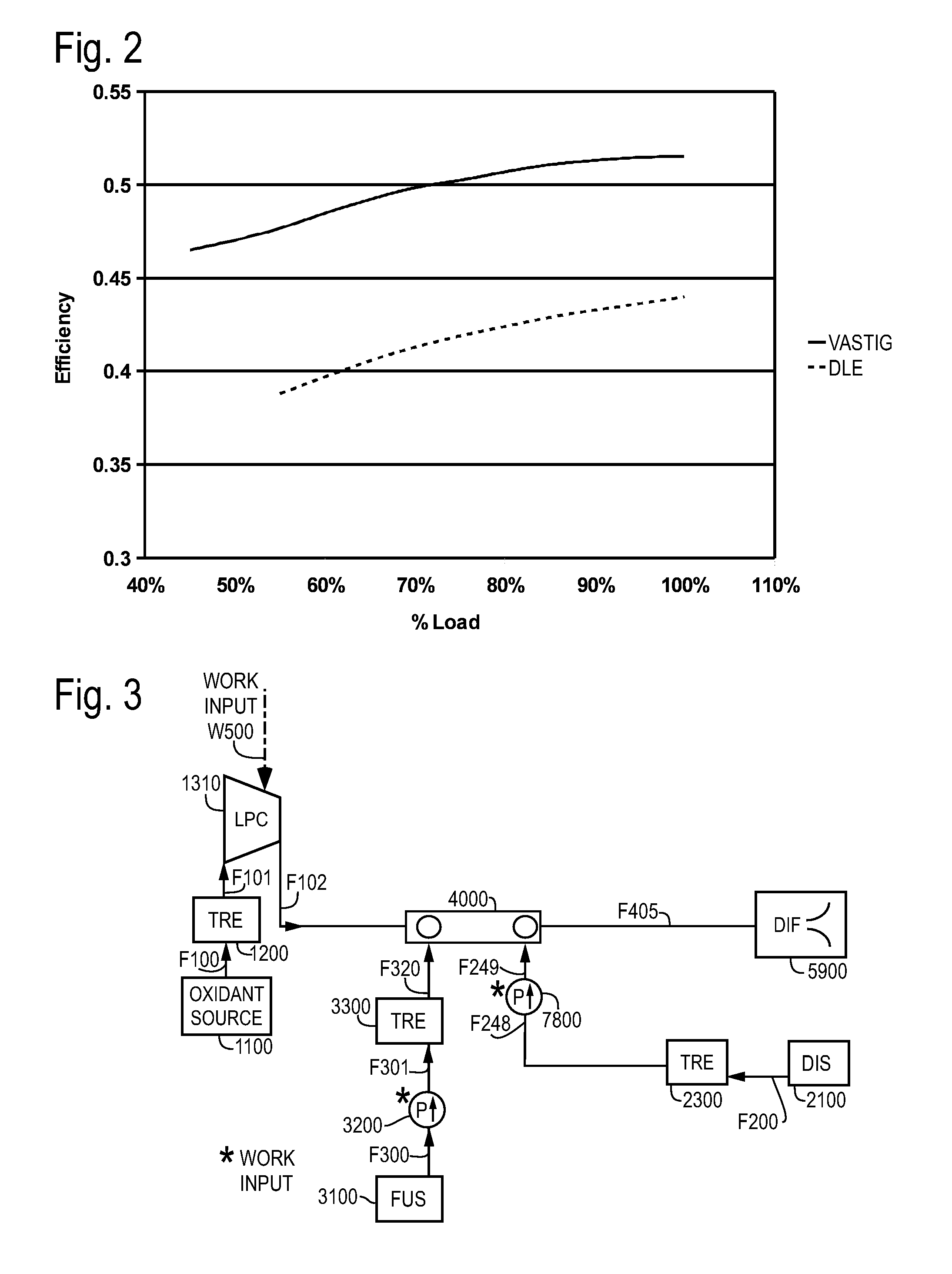Partial load combustion cycles
- Summary
- Abstract
- Description
- Claims
- Application Information
AI Technical Summary
Benefits of technology
Problems solved by technology
Method used
Image
Examples
Embodiment Construction
[0019]FIG. 1 shows an embodiment of the VASTIG cycle including control of thermal diluent delivery to control of the temperature in the combustion system 4000. This shows a power generation system with one or both of a low pressure compression system 1310 in fluid communication with a high pressure compression system 1350 upstream of the combustion system 4000 which is in fluid communication with an expansion system 5100 providing shaft power or work W580, which may drive an electrical power generation system 5200. Work W580 from the expansion system 5100 may drive one or more of the low pressure compression system 1310, the high pressure compression system 1350, and / or the electrical power generation system 5200 with one or more work flows W500, W501, and W530 respectively.
[0020]In some embodiments, the oxidant fluid F100 from oxidant source 1100 may be treated in an oxidant treatment system 1200 forming treated oxidant fluid F101 which may be compressed by the low pressure compres...
PUM
 Login to View More
Login to View More Abstract
Description
Claims
Application Information
 Login to View More
Login to View More - R&D
- Intellectual Property
- Life Sciences
- Materials
- Tech Scout
- Unparalleled Data Quality
- Higher Quality Content
- 60% Fewer Hallucinations
Browse by: Latest US Patents, China's latest patents, Technical Efficacy Thesaurus, Application Domain, Technology Topic, Popular Technical Reports.
© 2025 PatSnap. All rights reserved.Legal|Privacy policy|Modern Slavery Act Transparency Statement|Sitemap|About US| Contact US: help@patsnap.com



